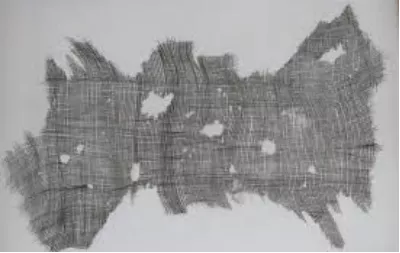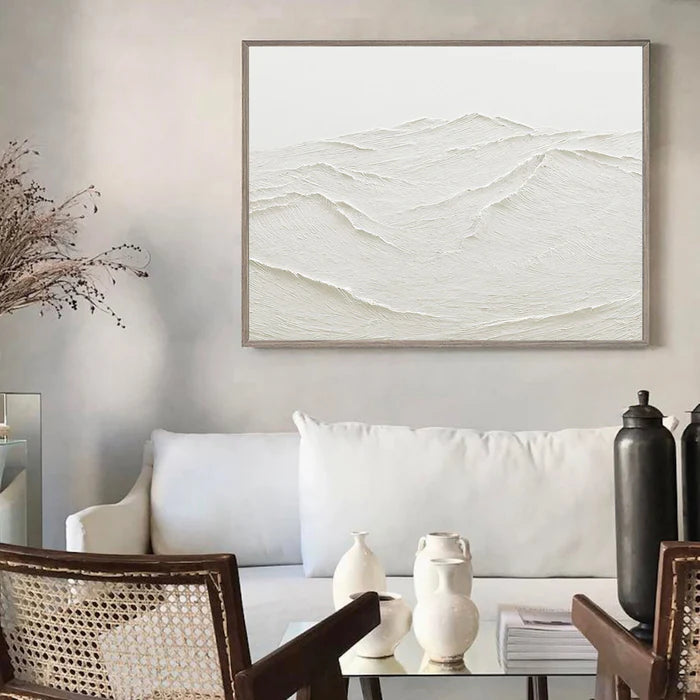Article: What Is Wabi Sabi Art? A Guide to Finding Beauty in Imperfection

What Is Wabi Sabi Art? A Guide to Finding Beauty in Imperfection
Have you ever found a sense of calm in a weathered wooden bowl, a cracked vase repaired with gold, or the quiet, stark beauty of a misty landscape? If so, you’ve already experienced the essence of Wabi Sabi Art. In this article, you will know more about Wabi Sabi Art.
Part 1: What Is Wabi Sabi Art?
For Wabi Sabi Art, this ancient Japanese philosophy is more than just an aesthetic; it's a whole way of seeing the world. It teaches us to appreciate the beauty that comes with time, use, and the gentle embrace of nature. In a world that often chases after the new, the shiny, and the perfect, Wabi Sabi Art offers a refreshing, soulful alternative that celebrates authenticity and humble simplicity.
At its heart, art of Wabi Sabi meaning is about acceptance. It’s the recognition that nothing is finished, nothing is perfect, and nothing lasts forever. This might sound melancholic, but it’s actually a profound source of liberation and peace. When we stop fighting against the natural flow of life and start seeing the beauty in its cracks and flaws, we open ourselves up to a deeper, more resonant experience of the world. This is the true gift of Wabi Sabi Art

Part 2: Quick Illustrations of Wabi Sabi Art Painting
While Wabi Sabi is deeply rooted in Japanese tea ceremonies and pottery, it has found a powerful home in the world of painting. Imagine a canvas that tells a story not through loud, bold statements, but through quiet whispers. A wabi sabi abstract art piece might feature a muted, earthy color palette with layers of paint that have been sanded back, revealing glimpses of the history beneath. It embraces textures like rough brushstrokes, cracks in the paint (craquelure), or even the intentional inclusion of voids and empty space.

Another beautiful example is a painting that captures the concept of impermanence art of Wabi. This could be a depiction of a lone, leafless tree in winter, a fading sunset, or a still life with wilting flowers. The subject matter itself is a meditation on the transient nature of all things, which is a cornerstone of the philosophy. These art prints art of Wabi Sabi meaning are incredibly popular, as they bring a sense of calm and contemplative energy into any living space.
Part 3: Core Beliefs Behind Wabi-Sabi Art
You can’t just make something look old and call it Wabi Sabi. True contemporary Wabi Sabi Art is built on a few foundational pillars:
Imperfection (Kintsugi): Flaws are not hidden; they are highlighted. Think of the art of Kintsugi, where broken pottery is repaired with gold lacquer, making the breakage a valued part of the object’s history. This is a powerful metaphor for embracing our own scars and imperfections.
Impermanence (Mujo): Nothing lasts. This principle is a gentle reminder to appreciate the present moment. Art that embodies this might use fading colors, ephemeral subjects, or materials that change over time.
Incompleteness (Fukinsei): Asymmetry and irregularity are preferred over balance and perfection. This reflects the asymmetrical, organic forms we find in nature, which are never perfectly symmetrical.

Understanding these principles is the first step in learning how to make Wabi Sabi Art yourself.
Part 4: Organic Elements: The Stuff of Wabi-Sabi Art
The materials chosen are just as important as the intent. Artists seeking this aesthetic gravitate towards natural, raw, and humble materials that age gracefully. The goal is to create a tangible connection to the earth and evoke a sense of beauty wabi sabi nature art.
Common choices include:
- Natural Fabrics: Linen, raw silk, hemp, and cotton. These fabrics have inherent texture and irregularity.
- Organic Pigments: Earth tones like beige, brown, grey, clay white, and muted greens. These are often derived from oxides, clays, and natural dyes.
- Found Objects: Driftwood, weathered stones, rusted metal, and handmade papers with visible fibers. These items come with their own history and patina.

Using such materials helps create a piece that feels authentic and connected to the world, whether it's a sculpture or a piece of wabi sabi canvas art.
Part 5: Wabi Sabi Beige & Brown Abstract
The color palette of Wabi Sabi is a direct reflection of its principles. You won’t find loud, neon colors here. Instead, the palette is drawn from the natural world: the comforting, neutral tones of sand, stone, wood, and earth. A Wabi Sabi Beige & Brown Abstract piece is a masterclass in this subtlety.
These works use texture and tonal variation to create depth and interest. The beauty lies in the nuances—the way a warm beige meets a cool grey, or how a wash of thin brown paint seeps into the canvas. This minimalist approach creates a serene and grounding atmosphere, making it a perfect choice for Wabi Sabi wall art that aims to turn a home into a sanctuary.
Part 6: Take Wabi Sabi Aesthetics Into Your Own Art Practice
You don’t need to be a master artist to embrace this philosophy. Learning how to make Wabi Sabi Art is about shifting your mindset. Here’s how to start:
Embrace "Happy Accidents": Spilled some water? Made a mark you didn’t intend? Don’t panic. Lean into it. See if you can incorporate that "flaw" into the piece. This is where the magic happens.
Work with Natural Textures: Try painting on a piece of reclaimed wood or a textured linen canvas. Use rough brushes or even your hands to apply paint.
Simplify Your Palette: Limit your colors to 3-4 earthy tones. Focus on building layers and creating depth with a limited range.
Leave Things Unfinished: It’s okay not to fill every inch of the canvas. Allow for empty space (known as "ma" in Japanese). Let the work breathe.
This approach is not only great for creating original art but also for crafting unique diy Wabi Sabi wall art for your home.
Part 7: Wabi SabiWallArt & Paintings For Sale Sale
For those looking to bring this tranquil energy into their spaces, there is a wonderful selection of Wabi Sabi Art for sale online. Many artists and galleries specialize in this aesthetic. When you browse aWabi Sabi Art gallery, either physical or online, you’ll find a range of pieces from large-scale original canvases to more accessibleWabi Sabi Art prints.
Investing in a piece of Wabi Sabi wall art is more than just buying decoration; it’s about choosing a visual reminder to slow down, accept the natural cycle of life, and find beauty in the simple, imperfect moments. A high-quality wabi sabi canvas art piece can become the focal point of a room, setting a tone of mindful tranquility.
Part 8: FAQs
Q 1: Is Wabi Sabi Art just about being messy or minimalistic?
A: Not quite. While it shares minimalism’s love for simplicity, Wabi Sabi is deeply tied to the acceptance of natural processes like aging and decay. It’s not a designed minimalism but an organic, authentic one that honors imperfection.
Q2: Can I mix Wabi Sabi with other decor styles?
A: Absolutely! Wabi Sabi wall art is incredibly versatile. Its neutral, earthy tones and organic forms can complement modern minimalist, Scandinavian, industrial, and even bohemian interiors beautifully. It adds warmth and soul to any space.
Q3: Where can I find high-quality Wabi Sabi Art&prints?
A: Many online market places and independent artist sites offer stunning Wabi Sabi Art prints. Look for artists who specifically work with texture, earthy palettes, and abstract forms. Always check the print quality and paper stock to ensure it does justice to the subtle beauty of the artwork.
Q4: How is contemporary Wabi Sabi Artdifferent from the traditional concept?
A: Contemporary Wabi Sabi Art translates the ancient principles into a modern visual language. While traditional Wabi Sabi might be a hand-thrown, asymmetrical tea bowl, a contemporary piece might be a large abstract painting on canvas that uses cracking mediums and organic pigments to evoke the same feelings of transience and imperfect beauty. The coreart of Wabi Sabi meaning remains the same; only the mediums and formats evolve.
Conclusion
Embracing wabi-sabi art means celebrating beauty in imperfection and transience. Explore our collection of wabi-sabi wall art to bring this mindful, nature-inspired aesthetic into your space. Discover pieces that honor authenticity and quiet elegance.

